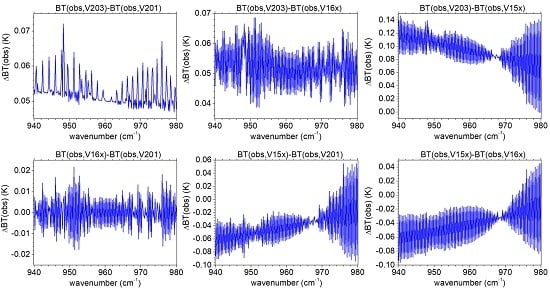Comparison of Retrieved L2 Products from Four Successive Versions of L1B Spectra in the Thermal Infrared Band of TANSO-FTS over the Arctic Ocean
Abstract
:1. Introduction
2. Instruments and Data
2.1. TANSO-FTS Instrument Onboard GOSAT.
2.2. TANSO-FTS L1B Spectra
- V15x.15x or V15x to simplify (V150.150 and V150.151) and V16x.16x of V16x to simplify (V160.160, V161.160, and V161.161): in these versions, the TIR radiometric calibration was optimized, the sampling interval non-uniformity correction was turned off, and gaps of the fringe count error and of the ZPD position error were corrected [22]
- V201.202 or V201 to simplify: sampling interval non-linearity correction for B1, B2, B3, and B4, modification of phase correction for B4, inclusion of the finite IFOV effect for B4 spectra, and modification of the ZPD bias correction algorithm [23]
- V203.203 or V203 to simplify: new TIR non-linearity correction applied [24].
3. Spectra Selection and Comparison Method
3.1. Radiative Transfer Model and Retrieval
3.2. Configuration of the Inversion
- See surface temperature Tsurf;
- One scaling factor for the initial profiles of CO2 up to the tropopause, the stratospheric profile is kept constant and equal to the initial profile;
- Two scaling factors for the initial profiles of H2O. One up to 800 m, a second between 900 m and the tropopause. In the stratosphere, the profile is taken to be constant and equal to the initial profile. In the layer between 800 m and 900 m, H2O VMR is multiplied by a piecewise linear function of the altitude;
- One scaling factor for the initial profile of O3;
- One spectral shift allowing to take into account small error in the spectral calibration; and
- One instrumental line shape parameter (optical path difference, see Section 4).
3.3. Selection of IFOVs
3.4. Differences between Versions at the L1B Level
4. Results
5. Discussion
6. Conclusions
Acknowledgments
Author Contributions
Conflicts of Interest
References
- Rajendra, K.P.; Myles, R.A.; Vicente, R.B.; John, B.; Wolfgang, C.; Renate, C.; John, A.C.; Leon, C.; Qin, D.; Purnamita, D.; et al. Climate Change 2014: Synthesis Report. Contribution of Working Groups I, II and III to the Fifth Assessment Report of the Intergovernmental Panel on Climate Change; IPCC: Geneva, Switzerland, 2014. [Google Scholar]
- Keeling, C.D.; Chin, J.F.S.; Whorf, T.P. Increased activity of northern vegetation inferred from atmospheric CO2 measurements. Nature 1996, 382, 146–149. [Google Scholar] [CrossRef]
- Saitoh, N.; Imasu, R.; Ota, Y.; Niwa, Y. CO2 retrieval algorithm for the thermal infrared spectra of the Greenhouse Gases Observing Satellite: Potential of retrieving CO2 vertical profile from high-resolution FTS sensor. J. Geophys. Res. 2009, 114, D17305. [Google Scholar] [CrossRef]
- Machida, T.; Matsueda, H.; Sawa, Y.; Nakagawa, Y.; Hirotani, K.; Kondo, N.; Goto, K.; Nakazawa, T.; Ishikawa, K.; Ogawa, T. Worldwide Measurements of Atmospheric CO2 and Other Trace Gas Species Using Commercial Airlines. J. Atmos. Ocean. Technol. 2008, 25, 1744–1754. [Google Scholar] [CrossRef]
- Buchwitz, M.; de Beek, R.; Burrows, J.P.; Bovensmann, H.; Warneke, T.; Notholt, J.; Meirink, J.F.; Goede, A.P.H.; Bergamaschi, P.; Körner, S.; et al. Atmospheric methane and carbon dioxide from SCIAMACHY satellite data: Initial comparison with chemistry and transport models. Atmos. Chem. Phys. 2005, 5, 941–962. [Google Scholar] [CrossRef]
- Yokota, T.; Yoshida, Y.; Eguchi, N.; Ota, Y.; Tanaka, T.; Watanabe, H.; Maksyutov, S. Global concentrations of CO2 and CH4 retrieved from GOSAT: First preliminary results. Sola 2009, 5, 160–163. [Google Scholar] [CrossRef]
- Crisp, D.; Pollock, H.R.; Rosenberg, R.; Chapsky, L.; Lee, R.A.M.; Oyafuso, F.A.; Frankenberg, C.; O’Dell, C.W.; Bruegge, C.J.; Doran, G.B.; et al. The on-orbit performance of the Orbiting Carbon Observatory-2 (OCO-2) instrument and its radiometrically calibrated products. Atmos. Meas. Tech. 2017, 10, 59–81. [Google Scholar] [CrossRef]
- Chédin, A.; Serrar, S.; Scott, N.A.; Crevoisier, C.; Armante, R. First global measurement of mid tropospheric CO2 from NOAA polar satellites: Tropical zone. J. Geophys. Res. 2003, 108, 4581. [Google Scholar] [CrossRef]
- Maddy, E.S.; Barnet, C.D.; Goldberg, M.; Sweeney, C.; Liu, X. CO2 retrievals from the Atmospheric Infrared Sounder: Methodology and validation. J. Geophys. Res. 2008, 113, D11301. [Google Scholar] [CrossRef]
- Kulawik, S.S.; Jones, D.B.A.; Nassar, R.; Irion, F.W.; Worden, J.R.; Bowman, K.W.; Machida, T.; Matsueda, H.; Sawa, Y.; Biraud, S.C.; et al. Characterization of Tropospheric Emission Spectrometer (TES) CO2 for carbon cycle science. Atmos. Chem. Phys. 2010, 10, 5601–5623. [Google Scholar] [CrossRef]
- Crevoisier, C.; Chédin, A.; Matsueda, H.; Machida, T.; Armante, R.; Scott, N.A. First year of upper tropospheric integrated content of CO2 from IASI hyperspectral infrared observations. Atmos. Chem. Phys. 2009, 9, 4797–4810. [Google Scholar] [CrossRef]
- Saitoh, N.; Kimoto, S.; Sugimura, R.; Imasu, R.; Kawakami, S.; Shiomi, K.; Kuze, A.; Machida, T.; Sawa, Y.; Matsueda, H. Validation of GOSAT/TANSO-FTS TIR UTLS CO2 data (Version 1.0) using CONTRAIL measurements. Atmos. Meas. Tech. Discuss. 2015, 8, 12993–13037. [Google Scholar] [CrossRef]
- Rayner, P.J.; O’Brien, D.M. The utility of remotely sensed CO2 concentration data in surface source inversions. Geophys. Res. Lett. 2001, 28, 175–178. [Google Scholar] [CrossRef]
- Park, B.C.; Prather, M.J. CO2 source inversions using satellite observations of the upper troposphere. Geophys. Res. Lett. 2001, 28, 4571–4574. [Google Scholar] [CrossRef]
- Niwa, Y.; Machida, T.; Sawa, Y.; Matsueda, H.; Schuck, T.J.; Brenninkmeijer, C.A.M.; Imasu, R.; Satoh, M. Imposing strong constraints on tropical terrestrial CO2 fluxes using passenger aircraft based measurements. J. Geophys. Res. 2012, 117, D11303. [Google Scholar] [CrossRef]
- Kuze, A.; Suto, H.; Nakajima, M.; Hamazaki, T. Thermal and near infrared sensor for carbon observation Fourier-transform spectrometer on the Greenhouse Gases Observing Satellite for greenhouse gases monitoring. Appl. Opt. 2009, 48, 6716–6733. [Google Scholar] [CrossRef] [PubMed]
- Kuze, A.; Suto, H.; Shiomi, K.; Urabe, T.; Nakajima, M.; Yoshida, J.; Kawashima, T.; Yamamoto, Y.; Kataoka, F.; Buijs, H. Level 1 algorithms for TANSO on GOSAT: Processing and on-orbit calibrations. Atmos. Meas. Tech. 2012, 5, 2447–2467. [Google Scholar] [CrossRef] [Green Version]
- Kataoka, F.; Knuteson, R.O.; Kuze, A.; Suto, H.; Shiomi, K.; Harada, M.; Garms, E.M.; Roman, J.A.; Tobin, D.C.; Taylor, J.K.; et al. TIR Spectral Radiance Calibration of the GOSAT Satellite Borne TANSO-FTS With the Aircraft-Based S-HIS and the Ground-Based S-AERI at the Railroad Valley Desert Playa. IEEE Trans. Geosci. Remote Sens. 2014, 52, 89–105. [Google Scholar] [CrossRef]
- Kuze, A.; Suto, H.; Shiomi, K.; Kawakami, S.; Tanaka, M.; Ueda, Y.; Deguchi, A.; Yoshida, J.; Yamamoto, Y.; Kataoka, F.; et al. Update on GOSAT TANSO-FTS performance, operations, and data products after more than 6 years in space. Atmos. Meas. Tech. 2016, 9, 2445–2461. [Google Scholar] [CrossRef]
- AERIS. Data and Services for Atmosphere. Available online: http://www.aeris-data.fr (accessed on 2 August 2017).
- ESPRI—MESOCENTRE Pour la Recherche sur le Climat. Available online: http://mesocentre.ipsl.fr/ (accessed on 2 August 2017).
- JAXA. Release Notes for GOSAT FTS L1 Products Ver 160.160. 16 May 2013. Available online: http://data2.gosat.nies.go.jp/doc/document.html#Document (accessed on 14 November 2017).
- JAXA. Release Notes for GOSAT FTS L1 Products Ver 200.200. 24 August 2015. Available online: http://data2.gosat.nies.go.jp/doc/document.html#Document (accessed on 14 November 2017).
- Kei, S.; The Japan Aerospace Exploration Agency (JAXA). Personal communication, 2016.
- Payan, S.; Camy-Peyret, C.; Jeseck, P.; Hawat, T.; Durry, G.; Lefèvre, F. First direct simultaneous HCl and ClONO2 profile measurements in the Arctic Vortex. Geophys. Res. Lett. 1998, 25, 2663–2666. [Google Scholar] [CrossRef]
- Keim, C.; Eremenko, M.; Orphal, J.; Dufour, G.; Flaud, J.-M.; Höpfner, M.; Boynard, A.; Clerbaux, C.; Payan, S.; Coheur, P.-F.; et al. Tropospheric ozone from IASI: Comparison of different inversion algorithms and validation with ozone sondes in the northern middle latitudes. Atmos. Chem. Phys. 2009, 9, 9329–9347. [Google Scholar] [CrossRef] [Green Version]
- Razavi, A.; Clerbaux, C.; Wespes, C.; Clarisse, L.; Hurtmans, D.; Payan, S.; Camy-Peyret, C.; Coheur, P.F. Characterization of methane retrievals from the IASI space-borne sounder. Atmos. Chem. Phys. 2009, 9, 7889–7899. [Google Scholar] [CrossRef] [Green Version]
- Press, W.H.; Teukolsky, S.A.; Vetterling, W.T.; Flannery, B.P. Numerical Recipes in C: The Art of Scientific Computing, 2nd ed.; Cambridge University Press: New York, NY, USA, 1992; ISBN 978-0-521-43108-8. [Google Scholar]
- Rothman, L.S.; Gordon, I.E.; Babikov, Y.; Barbe, A.; Chris Benner, D.; Bernath, P.F.; Birk, M.; Bizzocchi, L.; Boudon, V.; Brown, L.R.; et al. The HITRAN2012 molecular spectroscopic database. J. Quant. Spectrosc. Radiat. Transf. 2013, 130, 4–50. [Google Scholar] [CrossRef] [Green Version]
- Clough, S.A.; Shephard, M.W.; Mlawer, E.J.; Delamere, J.S.; Iacono, M.J.; Cady-Pereira, K.; Boukabara, S.; Brown, P.D. Atmospheric radiative transfer modeling: A summary of the AER codes. J. Quant. Spectrosc. Radiat. Transf. 2005, 91, 233–244. [Google Scholar] [CrossRef]
- Masuda, K.; Takashima, T.; Takayama, Y. Emissivity of pure and sea waters for the model sea surface in the infrared window regions. Remote Sens. Environ. 1988, 24, 313–329. [Google Scholar] [CrossRef]
- NOAA Earth System Research Lab, Global Monitoring Division. Available online: https://www.esrl.noaa.gov/gmd/obop/brw/ (accessed on 2 August 2017).
- Geoffrey, T.; Jet Propulsion Laboratory, Pasadena, CA, USA. Personal communication, 2016.
- AFGL Atmospheric Constituent Profiles (0–120 km); Optical Physics Division, Air Force Geophysics Laboratory: Hanscom AFB, MA, USA, 1986.
- Payan, S.; Camy-Peyret, C.; Bureau, J. Retrieval of sea surface temperature and trace gas column averaged from GOSAT, IASI-A, and IASI-B over the Arctic Ocean in summer 2010 and 2013. Proc. SPIE 2016, 9880, 98800D. [Google Scholar]
- Rodgers, C.D. Inverse Methods for Atmospheric Sounding: Theory and Practice; World Scientific: Singapore, 2000; ISBN 978-981-4498-68-5. [Google Scholar]
- WMO Global Space-Based Inter-Calibration System (GSICS). Available online: http://gsics.wmo.int/ (accessed on 2 August 2017).
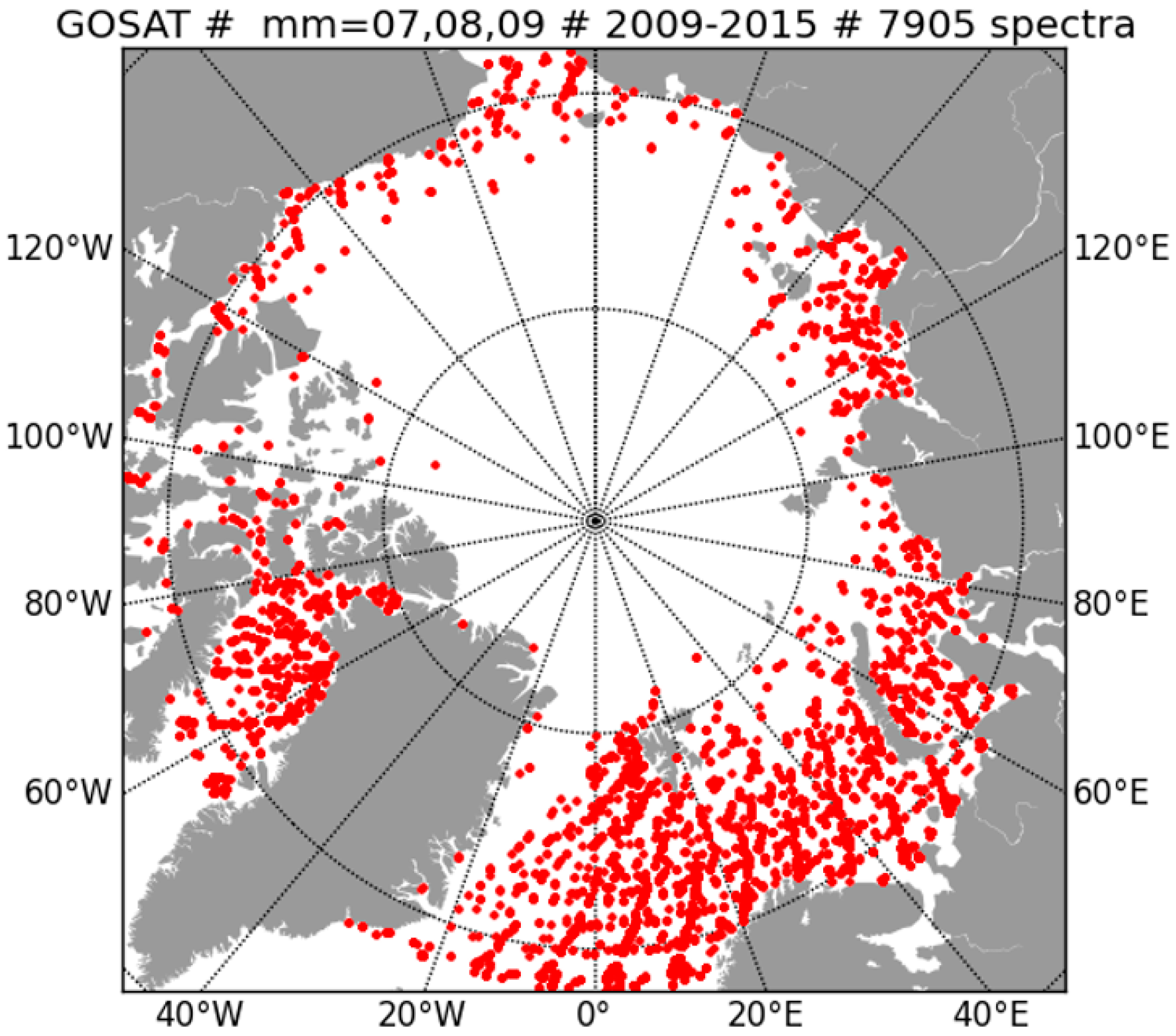
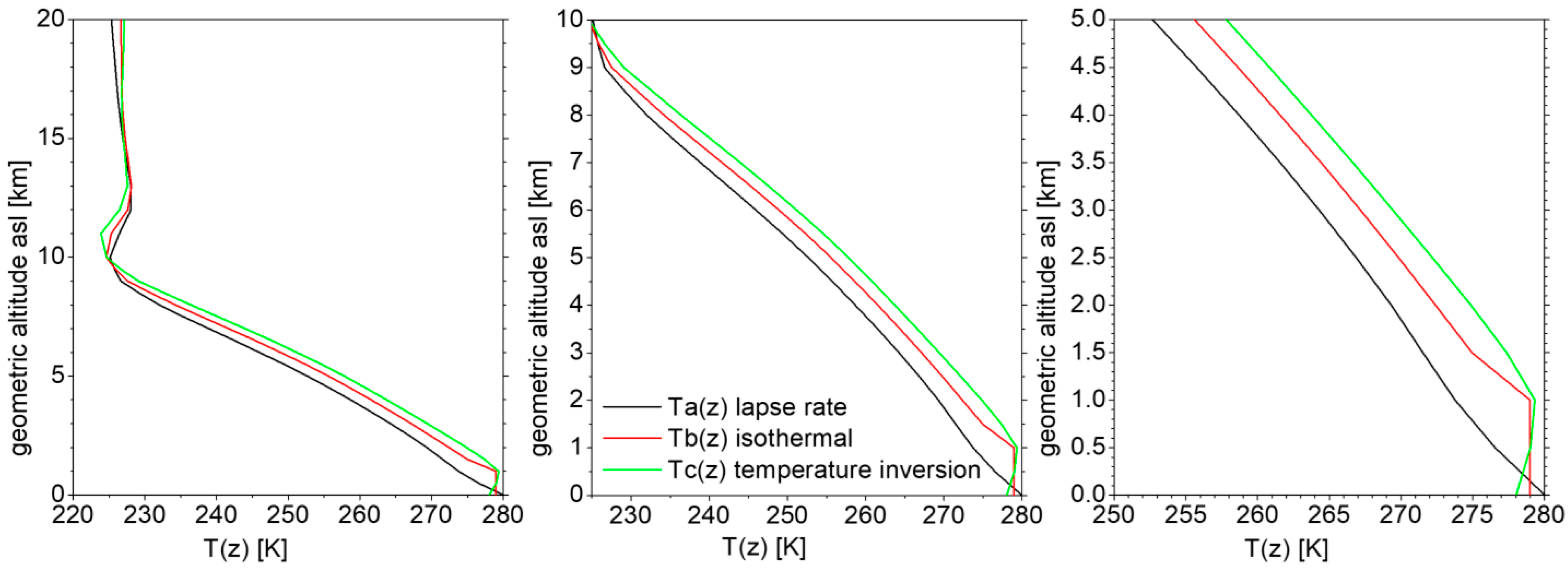
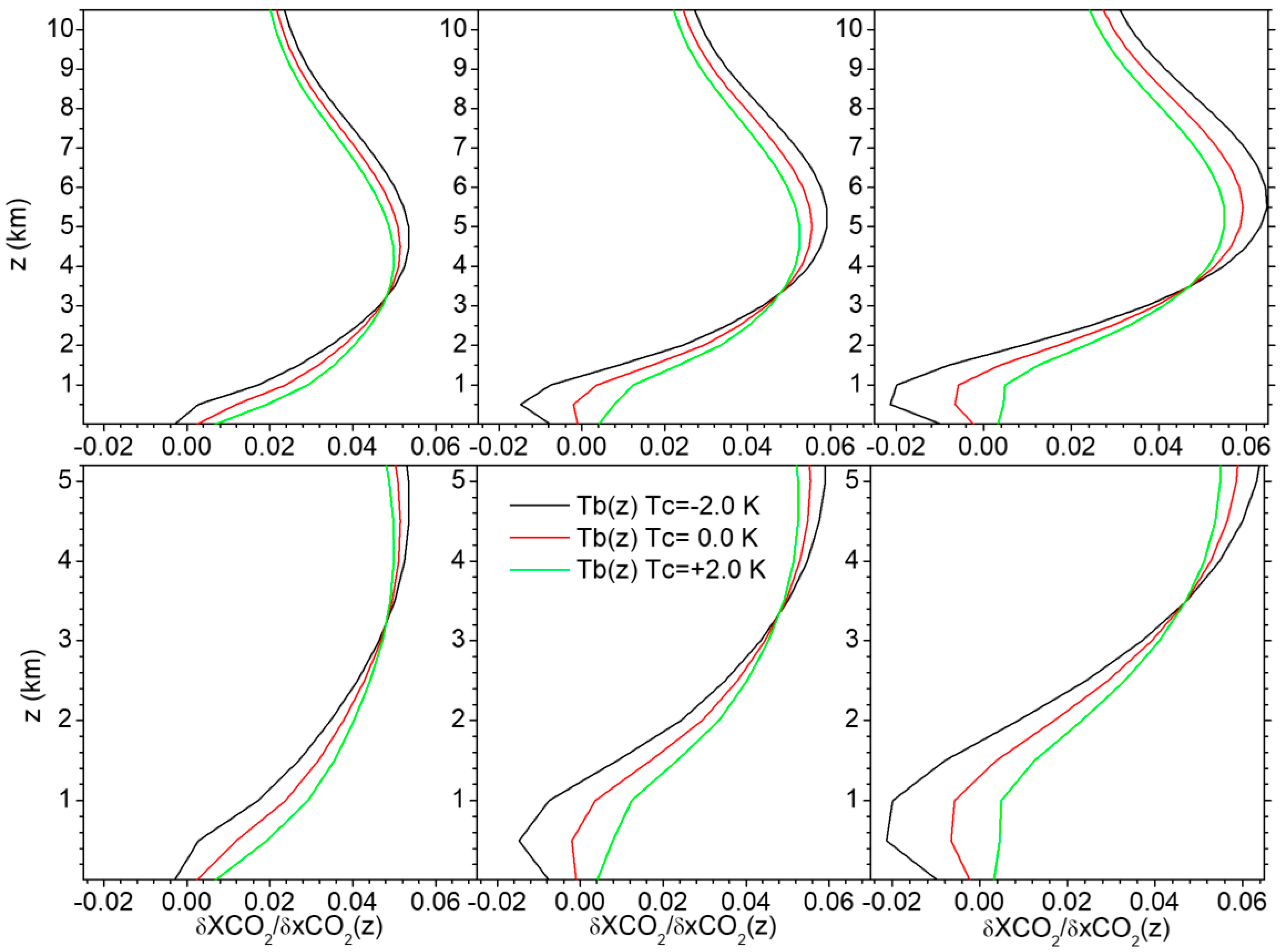
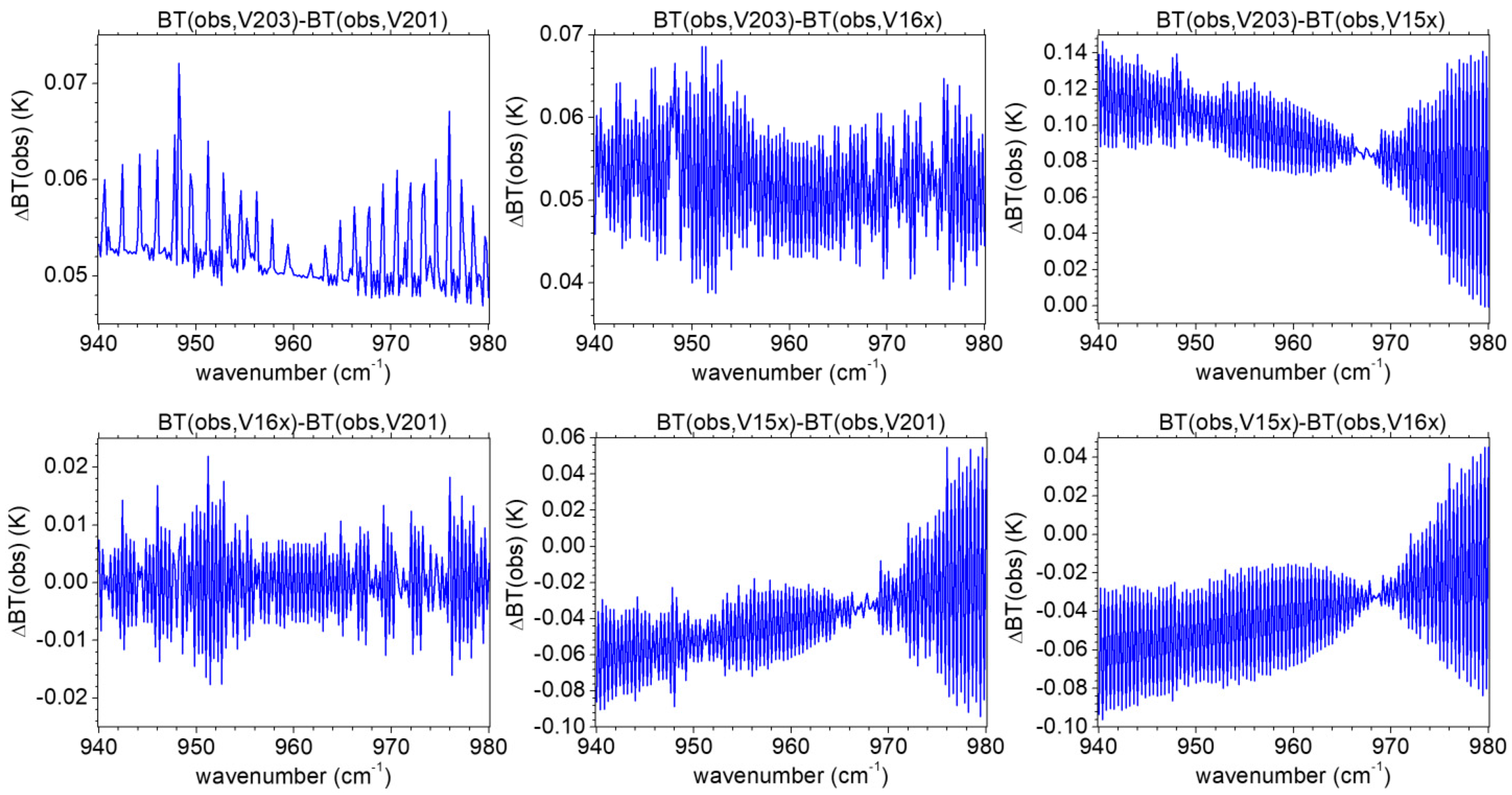
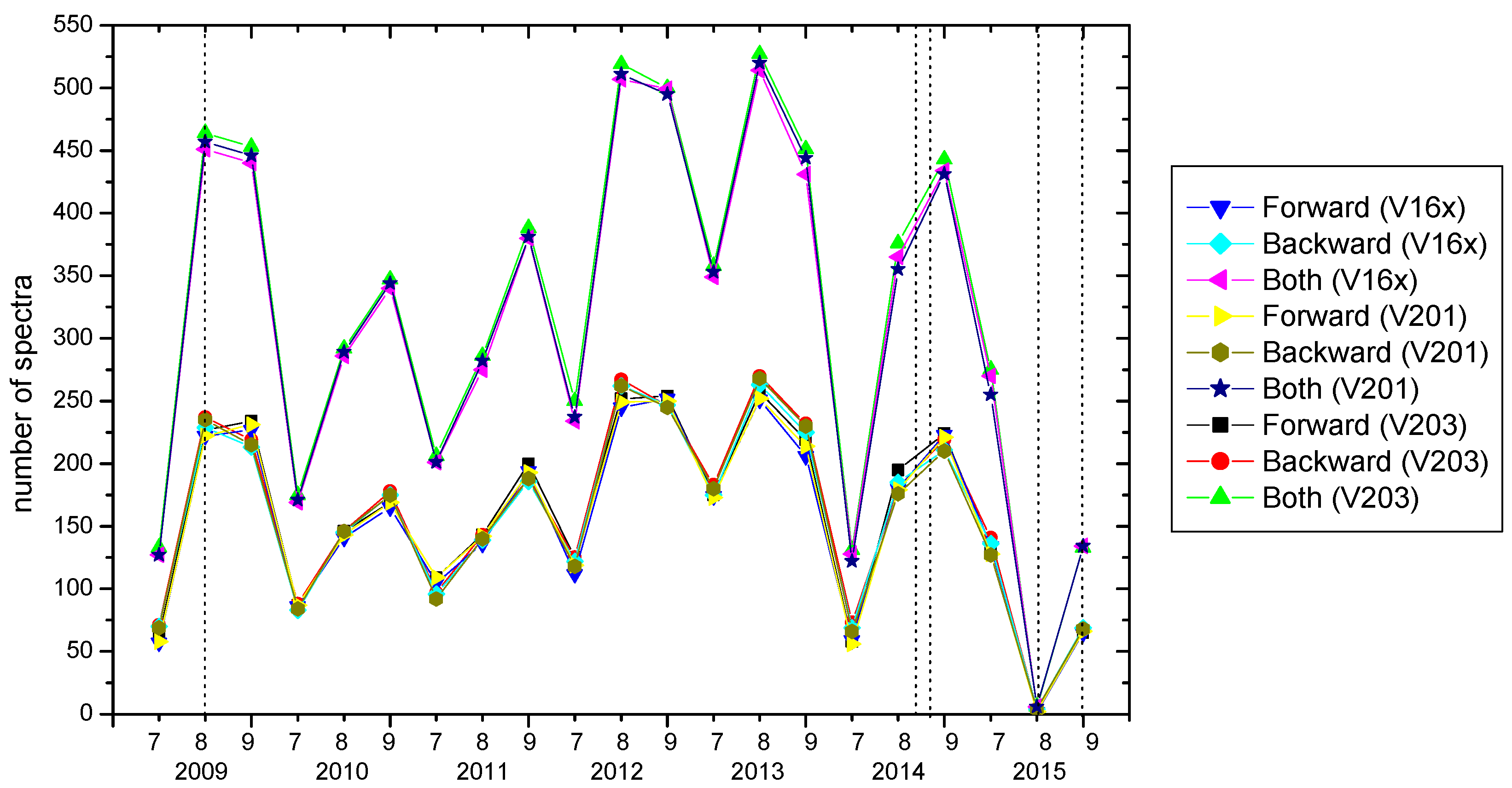
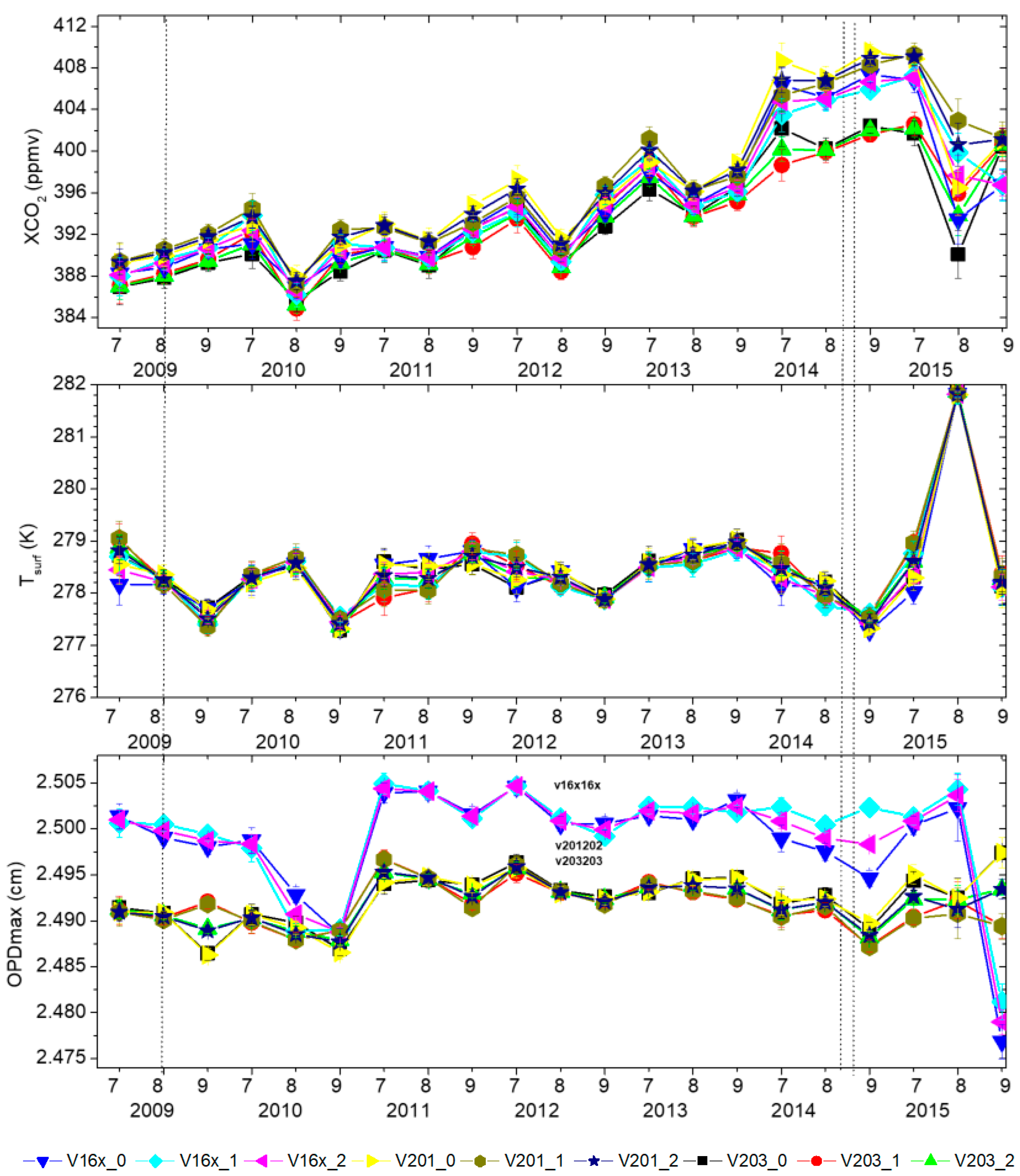

| Date | Configuration Changes | Nominal Pointing Pattern | Pointing System | Interferogram | Operation S = SWIR T = TIR |
|---|---|---|---|---|---|
| 23 January 2009 | Initial mode after launch | Five points | Primary | No bias | S + T |
| 1 August 2010 | Change of nominal pointing pattern | Three points | Primary | No bias | S + T |
| 24 May 2014 | Solar paddle/pointing system troubles | One and three point | Primary | 800 fringe bias | S + T |
| 26 January 2015 | Change of pointing system | Three point | Secondary | 800 fringe bias | S + T |
| 2 August 2015 | Cryo-cooler suspension | Three point | Secondary | 650 fringe bias | S |
| 14 September2015 | Cryo-cooler restart | Three point | Secondary | 1100 fringe bias | S + T |
© 2017 by the authors. Licensee MDPI, Basel, Switzerland. This article is an open access article distributed under the terms and conditions of the Creative Commons Attribution (CC BY) license (http://creativecommons.org/licenses/by/4.0/).
Share and Cite
Payan, S.; Camy-Peyret, C.; Bureau, J. Comparison of Retrieved L2 Products from Four Successive Versions of L1B Spectra in the Thermal Infrared Band of TANSO-FTS over the Arctic Ocean. Remote Sens. 2017, 9, 1167. https://doi.org/10.3390/rs9111167
Payan S, Camy-Peyret C, Bureau J. Comparison of Retrieved L2 Products from Four Successive Versions of L1B Spectra in the Thermal Infrared Band of TANSO-FTS over the Arctic Ocean. Remote Sensing. 2017; 9(11):1167. https://doi.org/10.3390/rs9111167
Chicago/Turabian StylePayan, Sébastien, Claude Camy-Peyret, and Jérôme Bureau. 2017. "Comparison of Retrieved L2 Products from Four Successive Versions of L1B Spectra in the Thermal Infrared Band of TANSO-FTS over the Arctic Ocean" Remote Sensing 9, no. 11: 1167. https://doi.org/10.3390/rs9111167




